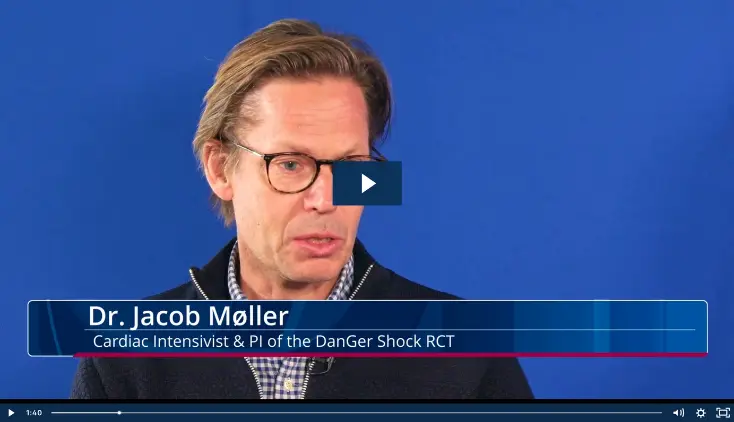Case Review, Access & Closure, ECMO, Escalation Therapy, AMI Cardiogenic Shock, Protected PCI
Mario Iannaccone: A Saturday Morning Cardiogenic Shock Case
Mario Iannaccone, MD, an interventional cardiologist in Turin, Italy, provides video footage and a description of how he and his team managed a STEMI patient with severe cardiogenic shock. The patient was a 58-year-old male who presented on a Saturday morning with a severe anterior STEMI. He experienced ventricular fibrillation while being transported to the hospital and by the time he arrived in the cath lab he had severe biventricular dysfunction and he was hypotensive with acidosis, a lactate of 10, and worsening clinical hypoperfusion.
Dr. Iannaccone describes the importance of stratifying and phenotyping patients to determine an appropriate intervention. In this case, he classified the patient as SCAI stage D with postcardiac arrest as risk modifier and biventricular shock. The next step was to determine whether to start treatment with inotropes or mechanical circulatory support (MCS). He emphasizes that this patient was in deep shock and in need of Impella® support while he started adrenaline and noradrenaline. He explains that it was critical to quickly support the patient, so he placed an Impella via right femoral access for left-side support. As soon as the Impella was placed, Dr. Iannaccone recounts that the patient had a complete loss of pulsatility and very rapid improvement in mean arterial pressure (MAP).
Using a single access approach he performed a coronary angiography which revealed total left main occlusion. He performed primary PCI with thrombus aspiration and placed one drug-eluting stent. At the end of the procedure the patient was on Impella support at P9, and still had acidosis, high lactate, and an ejection fraction of only 10%. While right ventricular function had normalized, the patient remained in SCAI stage D shock with left ventricular dysfunction.
Dr. Iannacconne waited one hour with the patient in the cath lab and when the patient remained in refractory shock despite two inotropes, he chose to add VA ECMO from the left groin. He explains that he chose VA ECMO over Impella 5.5® with SmartAssist® heart pump because it was Saturday, and while they could call the surgeon to place Impella 5.5 with SmartAssist, it was faster and easier to place VA ECMO.
After initiating ECpella support (the combination of VA ECMO and Impella support), Dr. Iannaccone was able to reduce Impella level to P4 and stop inotropes. After six hours the patient had complete lactate clearance and went to the ICU. At 48 hours the patient’s shock was SCAI stage A with ECpella support and Dr. Iannaccone could start weaning the patient from VA ECMO. He saw good LV recovery and was then able to wean the patient from Impella support.
In his concluding remarks, Dr. Iannaccone emphasizes the importance of a multidisciplinary team approach in such complex cases and the necessity to act quickly to assess and manage the patient.
Sign Up for Latest Updates
NPS - 624


